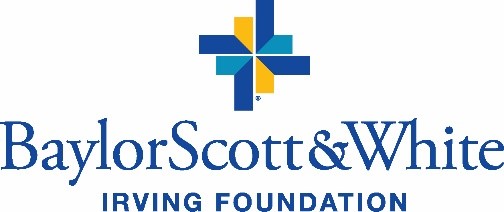What comes to mind when you hear the term "estate planning?"
If you're like many people, you know it has something to do with having a will. You’d also be correct if you said it involves making certain other types of arrangements affecting what happens once your life has ended.
A good estate plan goes further and addresses many aspects of your current situation, as well as how to thrive in the years to come. Consider this definition of estate planning:
Estate planning is the process of caring for yourself and your assets while you are living, and planning for the orderly transfer of assets to other persons and organizations– both during your life and afterwards.
Why do estate planning?
Very few people wake up in the morning and wish they could spend the day working with their attorney to create an ‘estate plan.’ However creating (or updating) a plan is among the most important things you can do. When you do, you can:
- Ensure the wealth you have accumulated over your lifetime goes exactly where you want it to go and when. If you don’t have a will or living trust, the state will impose a distribution plan for you, which may or may not match your wishes.
- Give directions to be followed in case you become incapacitated and can’t make decisions for yourself.
- Organize your affairs and designate who will handle them when you are gone.
- Appoint a guardian for minor-aged children.
- Provide for any special needs your loved ones may have.
- Minimize possible estate taxes and probate fees.
- Specify the type of funeral arrangements you would like.
- Remember and provide for friends, pets, and organizations you care about but are never a part of the default state distribution scheme.
By planning, you also make things easier for your family. If something happens to you, it will already be a very difficult time for your family and other loved ones. How wonderful it will be if they know exactly what you want to have happen and have the means at hand to follow your wishes. Consider the planning you do now to be your final future gift to your loved ones.
While estate planning can entail some difficult choices and means confronting uncomfortable issues, it does provide a sense of relief and peace of mind when it is done. You’ll know that you have done your best to plan and provide for yourself and for loved ones, as well as for the causes you’ve cared about during your lifetime. There is great satisfaction in knowing what your legacy on earth will be.
The Key Elements of an Estate Plan
Related to your final wishes
- Will. A valid will is generally type written, dated, and signed by you as well as two legally competent witnesses. States differ as to the exact requirements for a valid will and whether a handwritten will, with or without witnesses, is valid. The probate court oversees administration of a valid will at death to carry out your instructions. The court charges probate fees to administer an estate and the documents and proceedings are public record.
- Revocable Living Trust. This replaces the will as the main document disposing of your property. You might hear it referred to as a “living trust” or “RLT.” The trust is created while you are living, and the power to change and even revoke it can be retained. Most often people serve as the trustee for their own revocable living trust. A living trust requires that you actually transfer your property into it for it to be effective. A living trust allows assets to pass to heirs outside of the probate process, potentially saving probate fees, and keeps your affairs private.
Typically, if a living trust is recommended your estate planning lawyer will also suggest a will as a backup document, to transfer any assets that weren’t included in your trust at the time of your death.
- Beneficiary Designations. Your will or living trust does not control distribution of assets such as your IRA, commercial annuities, and some other assets at death. Your IRA or annuity administrator will distribute these types of assets according to a beneficiary designation form on file with their office. These are the forms you fill out when you establish IRAs or other types of retirement plans or purchase a commercial annuity or life insurance policy. This form directs the administrator as to who will receive whatever remains upon your passing. You can also request a beneficiary designation for a bank or investment account. Since your will and living trust do not apply to these important assets, these beneficiary designations can have a profound impact on how your overall estate is distributed and should be part of any coordinated plan.
Provide for physical or mental incapacity
- Power of Attorney (POA) for financial matters. This document grants to someone you trust the ability to act on your behalf for a variety of potential transactions and responsibilities. You decide when the POA will become effective and the extent of the authority granted. A POA is only effective during your lifetime and automatically terminates at your death.
- Health Care Power of Attorney (HCPOA) for health care decisions. This document appoints someone to make decisions for you regarding medical treatment if you are not able to make these decisions for yourself. It allows you to specify who is in charge of making critical treatment decisions and, perhaps more importantly, who does not have that authority.
- Physician’s Order for Life Sustaining Treatment (POLST). This document describes what health care treatment you want in case of an emergency. You work with your doctor to document your wishes regarding resuscitation and other life sustaining procedures.
Managing and distributing your wealth
You might conceive of the estate planning process as constructing a pyramid from the ground up. Primarily, you want to do what you can to ensure your own well-being. In so doing, keep in mind that it's not selfish to look out for yourself! Only by meeting your own needs now and in the future are you able to build the next level of the pyramid.
If you’re fortunate enough to accomplish some important basics, you’re then in a position to provide for family members and other loved ones. Thereafter, if you have the desire and the means, it becomes appropriate to think about a legacy you can leave for causes dear to you in addition to family and friends.
We hope that you will consider arranging a gift to Baylor Scott & White Irving Foundation when you create (or update) your estate plan. We realize that we will never replace family members and other loved ones in your plans, and we wouldn’t want to. Part of your planning process is to consider how much to leave to individual heirs; what remains can be used to fulfill your charitable dreams and desires.
How much to leave to children and grandchildren is a judgment call. Some parents transfer as much of their estates as possible to heirs. Others fear that transferring too much wealth may discourage productivity and undermine self-motivation. A memorable line from the movie The Descendants encapsulates this debate nicely: “…you [want to] give your children enough money to do something but not enough to do nothing.” Still others realize that the community and world they leave to their children and grandchildren is also part of their legacy.
If you would like to support our foundation through your will or living trust, click here for sample bequest wording you can share with your attorney. Or consider a gift by beneficiary designation also known as a "bequest substitute". It has many of the same advantages as a bequest while being among the most tax-wise ways to give.


